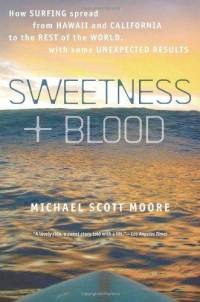
author: Michael Scott Moore
Moore begins his folkloric summary of the globalization of surfing with a disclaimer “ this isn’t Endless Summer”. And it truly isn’t. And that is where Moore’s depiction of surfing and the amalgamation of surf cultures is most unique. Instead of following the usual searching for the ultimate stroke or chasing the perfect wave,Moore reaches out to the lesser known surf countries and sub cultures – most relatively obscure to so called seasoned or commercial wave riders.
Moore wisely compares the devolving of original Hawaiian surf culture to African Music as it evolved through Black/African American culture into Blues, Jazz and Rock and modern Hip Hop/Rap. He ponders if George Freeth ( considered to have caught the first wave in the continental United States circa 1907- although this is disputed) would recognize the modern visage of surfing as compared to his first impression in the South Pacific : that is to say whether a recently captured and enslaved African singer from Mali in the 1700’s would hear the resonance of his songs in those of Johnie Lee Hooker or the Rolling Stones in the 2000’s.
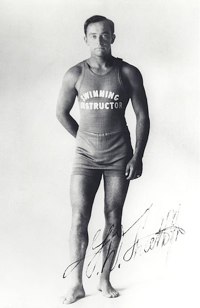
It seems that the greatest contribution westernization ( in this case read Americans/Australians) made to surfing was the engineering and marketing of not just the sport but of the surf board and wetsuit. The invention of the wetsuit caused a worldwide surfing boom as it solved the problem of having surf-able venues but inclimate water temperatures. So in this it was western technology that moved surfing into the global lexicon.But even as early as the 1900’s “ see a man walking on water” was used as a marketing gimmick to draw beach goers specifically to Abbott Kinney in Venice,California. But by then Western sexism and missionary patriarchy had dismantled the original co-ed surf culture of Hawaii and Polynesia in the mid 1800’s.
Moore writes of 8 locations where he conducted local oral histories and he surfed : In Indonesia -Bule Bule, Munich,Germany, Morocco, The United Kingdom-Cornwall, Israel and the Gaza Strip, Mirimar,Cuba, Soa Tome and Principe Islands and he ends his journey in Japan.
His first chapter is an exploration of the California and Hawaii connection for modern surf culture. Again a great list of firsts- first surfer to stand on a board, first surfer to use a long board, first wet suit developed and the like. However each of the nine chapters stands alone as an essay or travel lore, speaking to the identity of surf cultures in a particular political environment or country. In actuality you don’t have to read the stories in order, but if you pay close attention you can discern the time line of his trip albeit somewhat Pulp Fiction or Memento style.
Of Indonesia he describes the dichotomy of the two towns of Kuta. One on the island of Lombok. This is a poor semi developed village- the pauper to the prince city of Kuta in Bali. The Balinese Kuta is a well known on the surf circuit and was the scene of a series fundamentalist Islamist bombings in 2002 and 2005. He traces the “first” person to surf Indonesia- Bob Koke in 1936. Koke is considered the first “bule”( Indonesian for haoli or white guy) to surf Indonesia. He discovers that there were already Indonesia words for surfing -”Serup” or another term “nyosor umbak”. So like many fishing or water cultures there exists a long history of body surfing or body boarding.
Going back to his residency country of Germany, Moore refers to the European position held that America exports its cultures more than anything physically tangible. This holding true with surfing which is considered a trash culture of “if not trash frivolity” by many non surfing Germans. Munich is shown to have a small surf scene but the city of Eisbach holds the greatest surfing tourist attraction. It is known for the Eisback Wave. The Wave is an civil engineering oddity. Not done deliberately and certainly not designed to be surfed as technically the surfing here is illegal. Eisback’s surfing is done along canals and under the bridge breaks. Moore tells the tale of an attempted surf escape from East Germany in 1986. Communist countries of the time while having actual surf and sea borders had no access to surf equipment and relied on smuggled or home crafted gear. The concept of surfing was “verboten” in Germany at the time for the very reason that it was thought to be a means of escape. Something that is laughable in the post Berlin Wall era of Bavarian surf culture which involves windsurfing and paddling around rafts selling schnitzel.
In Morocco Moore finds that so pervasive is California to the global image of surf culture that it and Indonesia bill themselves as the “California of Islam”. Although it was Australian hippies who were thought to have first trail blazed Anchor Point a break north of Taghazout. Again Moore compares tribal identities and the history of slavery and music to provide a template for the development of surf culture in Northern Africa. Morocco having served as an epicenter for Arab slave trading of North and West Africans became a keystone for African Diaspora music forms. Moore encounters a purveyor of Gnawa and other Berber and African folk music as backdrop for the Moroccan surf scene. Today these traditional music forms have been overridden by Reggae. Although much of the Moroccan surf scene is iconed by a liberationist symbol of Berber pride. Surfing is seen as a counter culture globally – not just chasing a wave but chasing an idea. Sadly as Moore learns first hand it only takes a short time and corporate sponsorship to commercialize a would be Shangrila. And it seems to be the Americans and Australians leading the pack. Quicksilver has subsidized surf legends such as Miki Dora ( the character Moondoggie from the Gidget series was said to be loosely based upon his life) to populate the local scene.( Dora died in 2002) And Moroccan King Mohammed VI established the Oudayas Surf Club in Rabat. The club is said to cater to Europeans and has proposed Morocco’s Atlantic shore to surf investment from Americans and Saudi Arabians for the cost of 2 Billion dollars.
Still in Europe Moore venture’s to England’s surf capital the town of Newquay. Its pride is the Cribbar Wave. This is the only “big wave” within the boundaries of Cornwall. Instead of surfing the obvious bay waters Moore surfs the Severn Bore. The Severn in the largest river in Britain akin to the Mississippi River in the American South, and has a unique tidal phenomenon. Roughly a dozen times a year the Severn has very high tides called bores which move upstream instead of downstream. It is one of these that Moore pursues with the most unusual local assigned task of watching out for dead sheep and a Nessie like floating refrigerator.
It is also at this point in his storyline that Moore focuses on how surfing reenforces local identities. Each non-Hawaiian surf location fosters a surf culture and history that it makes its own – complete with designated insiders and outsiders. The locals differ but the argument is the same who or what is a “real” surfer. The British also get into the firsts- the first of the Isles to surf -again upright or body style. And there is a unique a pride held in Edward VIII as the first Royal to surf . The irony of which is that Hawaiian surfing has origins in the royal blood lines of Polynesia. A point not lost on Moore but included in his contempt for the kitschy plastic sharks and Guinness Book of World Records long board holding 14 people promoted in the area. Another rarity of the bore wave phenomenon is that it creates only one wave every twelve hours- so it lends itself to Bore chasing which is chronicled and debated on the internet by participants with you tube videos shot from helmet cameras.
Twelve hours between waves may seem like a labor of love but Moore takes his quest a step further by enduring just as many hours of inspection and bureaucracy when entering Israel and the Gaza Strip. Most interesting is his getting the third degree trying to leave the country. Granted Moore’s having German and American passports may not have helped his cause. But even in the Middle East, no especially n the Middle East surfing is political. The founding of the Palestine Surf Club is considered by some Israelis a radical act. Palestine however is not recognized as a State and the Gaza Surf Club is more an theory than a practice. Israel itself has a well established surf community ,its life-guarding societies feed heavily into surf culture and there exists a revenue of 2 billion dollars in goods annually. The official Israeli life-guarding rescue craft are called hasakes. Traditional style hasakes mark the Middle East as having a stand up surf tradition of equal lineage to that of Hawaii. Surfing 4 Peace was created as a group to receive donations into Gaza and to build a Palestinian surf culture yet despite the endorsement of the American surf champion Kelly Slater donations don’t get through.
So is surfing a hobby or a sport? While not a peculiar question to a non surfer the answer holds even greater significance in regulated countries like Cuba where Moore ventures next. For like the Palestinian Gaza Surf Club, the Havana Surf Club relies heavily on the “kindness of strangers”. A kindness that was allowed only with the bureaucratic override of the definition of surfing as an official sport. Again under a Communist government surfing is seen as an escape opportunity- if not directly by water then by defection by participating in international competitions.
Here in the Latin American Caribbean Moore finds another set of surf origins traced back to Peru. Three thousand year old stone carvings have been found to depict “caballitos”. A caballito is a totora reed based canoe upon which the rider can stand upright and navigate waves. Historians argue if this form of surfing predates Hawaiian and Polynesian encounters. Moore compares Mirimar,Cuba and its Calle 70 base of surf clubs to the status of lower middle class Los Angeles. He finds a capitalist-communist split in the distribution of donated boards and promotion of Cuban surfers. Back to the USA as the Pied Piper of surf culture. The movie Point Break was shown on Cuban national television in 1990 : it and the Brazilian surf film Maneuver Radical are said to have sparked an interest in surfing by Cuban nationals. Commercial surf companies Quicksilver and Roxy have also sponsored pro surf clinics for the Guantanamo Bay Military Base. American military and their families have a history of surfing Guantanamo since the 1960’s.
Moore lands next in his most obscure surf spot of Sao Tome and Principe. The twin island nation is located in the Gulf of Guinea. Currently it is a left over slave outpost used by the Portuguese for pseudo African holidays. It is considered extreme virgin surf territory just off the Africa’s western coast . It proximity to Nigeria caused an oil search boom which ended in the finding of oil but none that was considered commercial grade. So its backup identity and commerce is as a tourist spot of which surfing is slowly coming into play. The first surfer ( again by Western standards) was recorded as late as the year 2000. His name was Sam George and he returned in 2006 to make a surf documentary called The Lost Wave. Moore meets and surfs with the “native” star of the film a young man named Chum ( pronounced shoon). From Chum he rediscovers stomach or belly surfing prevalent in Western Africa before stand surfing. The indigenous boards being called tambua (tam-BOO-a). These boards and styles of surfing only reenforce Moore’s proposal that there were and are independent surf cultures beyond the Hawaiian and Polynesian model adapting to modern surfing. Modern stand up surfing on the continent of Africa was considered to have been brought to light by an Australian in 1928. And Agatha Christie even references surfing in South Africa in a 1924 novel- The Man In The Brown Suit.
Like Morocco’s Berber pride ties- Sao Tome and Principe surfers have an ancestral ties to being decedents of rebel Africans. Specifically the Angolares. These were fishermen who escaped or eluded enslavement in the Portuguese colonies. As such they held no ties to the plantations and working the fields- only the seas.
Moore closes his journals with a final pilgrimage to the most modern presentation of surfing: Japan and the Nippon Surfing Club. Introduced to surfing by “gaijin” Americans and Life Magazine in the 1960’s Japan now has a flourishing surf identity of its own. Here he finds that the Japanese have mastered and adapted surfing and surf culture in much the way they absorb and improve upon other outside cultures.
In the end the Sweetness + Blood provides the reader with a sentimental wave of their own. The “unexpected results” being a desire to preserve the spirit of surfing and to keep the concept of “surfer” from being regulated to a given country or ocean.


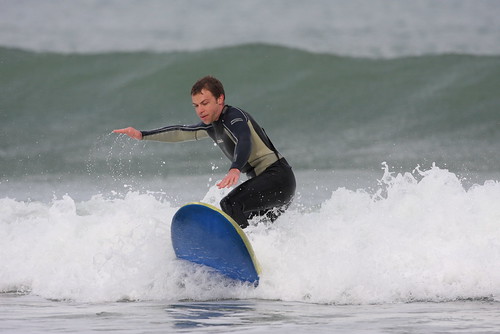
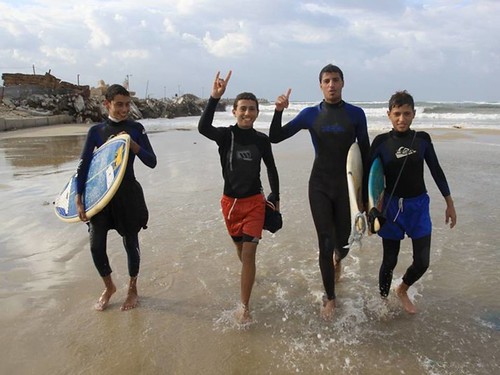
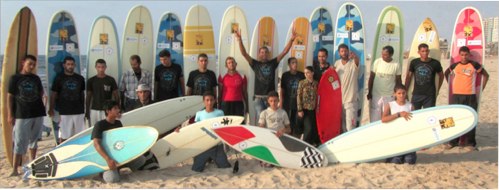

 Book Review: “History of a Pipe Dream” by Susan Miller
Book Review: “History of a Pipe Dream” by Susan Miller “Where the Hell Am I? Trips I Have Survived” – Book Review
“Where the Hell Am I? Trips I Have Survived” – Book Review Learn to Bodysurf Like President Obama
Learn to Bodysurf Like President Obama Book Review: “My Itchy Travel Feet” by Donna L. Hull
Book Review: “My Itchy Travel Feet” by Donna L. Hull
